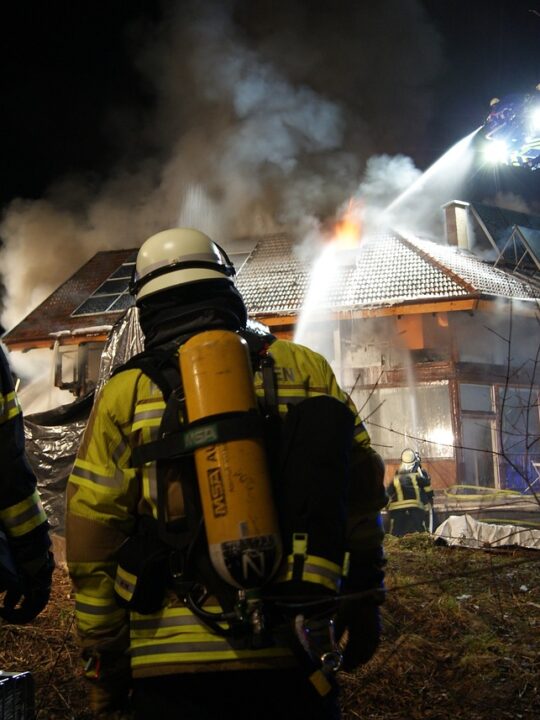Are you tired of spending money on a preventative measure that isn’t working?
When it comes to roof leaks, people want a solution they can implement without having to spend a bundle of money or go through a difficult process. If you’re tired of seeing this happening, it’s time to find a solution.
In this article, we’ll give you some effective ways to stop roof leaks in heavy rain. We’ll have you fix the issue in no time. Read on to find out more!
Table of Contents
- 1 1. Start with a Roof Inspection
- 2 2. Making Use of Proper Roofing Materials
- 3 3. Install Gutters and Downspouts
- 4 4. Prioritize Roof Insulation
- 5 5. Make Use of Sealants
- 6 6. Avoid Pressure Washing
- 7 7. Watch for Flashings with Heavy Rain
- 8 8. Make Regular Repairs to the Roof
- 9 9. Utilizing Protective Waterproof Coating
- 10 A Guide to Preventing Roof Leaks in Heavy Rain
1. Start with a Roof Inspection
Before conducting a roof inspection, it’s important to be aware of the roof structure as well as its condition. Roof inspections should be performed in dry weather, as wet roofs can be slippery.
During the inspection, check for potential holes, tears, or cracks in the roofing materials, especially around chimneys, vents, and flashing. Check for missing, warped, or loose shingles and tiles.
Make sure gutters and downspouts are properly installed and in good condition. Some roofing issues may be obvious, but others may require further investigation.
2. Making Use of Proper Roofing Materials
Metal roofing is very durable and can withstand harsh weather conditions, unlike other materials. It also reflects sunlight that keeps the house cool in the summer months and prevents any damage caused by the sun’s rays.
Other high-quality materials, such as ceramic tiles, slate shingles, and asphalt shingles, are some common choices. Tiles and slate shingles provide greater longevity in rainy and humid climates.
Asphalt shingles require careful installation and regular roof maintenance to perform well in the long run. Proper flashing should also be installed to ensure a watertight seal is between the roof and any obstructions, such as chimneys and vents.
3. Install Gutters and Downspouts
Gutters are installed around the edge of the roof, usually below the edge of the shingles. This can help direct the water off the roof, away from the foundation of the house, and into the downspouts.
Downspouts should be angled and sized properly to move the water away from the house. With gutters and downspouts, the roof will be kept dry, and the foundation of the house will be protected from unnecessary water damage.
4. Prioritize Roof Insulation
It’s important to prioritize roof insulation because it helps to keep the roofing structure dry. Having a good insulation system in place can help to reduce heat loss during colder months and improve efficiency in the winter.
Select an insulation system that is properly sealed and adhered to, providing maximum coverage and no place for moisture to seep in. Periodically check the insulation system to ensure that there are no gaps that could be vulnerable to moisture.
5. Make Use of Sealants
Sealants are weather-resistant materials that can be applied to structures to form a barrier of tight seals. It can be applied anywhere around the roof line to make sure there’s no way that water can enter.
They’re generally made from rubberized or acrylic materials and are easy to apply. These should be regularly checked for any damage and reapplied if necessary.
To ensure optimum protection from heavy rain, the sealant should be applied to all of the vulnerable areas where water can enter. It also protects against mold and mildew and keeps expensive repair bills in check.
6. Avoid Pressure Washing
High water pressure can force water into vulnerable spots, generating leaks. The amount of water from pressure washing can cause the roof to rot and deteriorate.
The pressure of the water breaks the granules that make up the asphalt, leading to weakened shingles. The blasting of the pressure washer can also reduce the life of other components of the roof.
An improper pressure washing job can also loosen seals and leave the roof more vulnerable to blowing off in the wind. It can also damage the decking, making it more exposed to harmful elements and reducing its lifespan too.
Instead, use a soft-bristled brush to gently scrub and wash the roof. This will help prevent any debris or dirt from building up on the roof, making it more likely that any potential leaks can be identified quickly and repaired.
7. Watch for Flashings with Heavy Rain
If these flashings become loose or damaged, they can create a gap for rain to enter your roof. There are areas such as these that should be checked and secured before a storm.
Look for signs of previous water damage or wear, as these areas are vulnerable to leaking. Manually inspect your roof and replace or repair any affected flashings before heavy rainfall to help avert damage
8. Make Regular Repairs to the Roof
It is best to inspect your roof and make any necessary repairs at least twice a year, particularly before the heavy rain season. Check for things like loose or missing tiles, broken or cracked shingles, and any other obvious damage.
Clear away any debris around any roof protrusions, such as chimneys and vents, as they can become blockages for water. Make sure to regularly check for algae, moss, and lichen as they can hold onto moisture which can lead to leaks
If a professional roofer is needed to do the repairs, hire someone who is experienced in working with roofing repair. If any of the above is neglected, then the chances of a leaky roof are increased.
9. Utilizing Protective Waterproof Coating
The coating is applied to the roof deck and creates a durable, waterproof layer that helps keep water out. It also reflects heat, helping to keep the house cooler in hot weather.
The coating is resistant to UV radiation, so it won’t deteriorate over time. It can also help protect against hail damage and wind-driven debris.
If properly applied, this coating can last up to 10 years. This can be a great way to prevent leaks in the event of a major storm, regardless of the materials used to construct the roof.
A Guide to Preventing Roof Leaks in Heavy Rain
Roof leaks can be prevented with careful execution and maintenance. Following the tips mentioned in this guide can help you prevent roof leaks in heavy rain and other damage.
Keep these tips in mind to ensure your roof won’t fail during the next heavy rainfall. Start by assessing and acting now to prevent roof leaks and ensure your home’s safety.
Did you enjoy this topic today? Then explore the rest of our blog.







